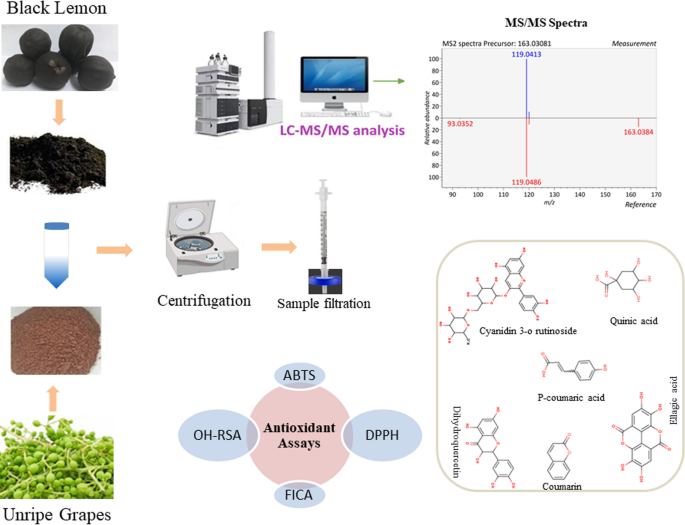文章信息 | A comprehensive characterization of polyphenol extracts from wasted sour fruits by LC–MS/MS and evaluation of their antioxidant potentials, Journal of Food Measurement and Characterization, 2023, 18, 02. | 作者 | Waheed Ahmad, Akhtar Ali, Ali Mohsin, Xiaoguo Ji, Mahwash Aziz, Li Wang, Liming Zhao* | 摘要 | Unripe grapes are pruned waste fruits of wine farming, while black lemons are dried products of agriculture waste lemons from lime fields. These fruit wastes are a rich source of bioactive molecules, especially polyphenols that are beneficial metabolites for human health to reduce or inhibit the oxidative stress and can be utilized in foods or pharmaceuticals. Therefore, this project aimed to study the wasted sour fruits for their polyphenols, antioxidant activities, and to support their symbiotic utilization as therapeutic and pharmaceutical products. This research was completed with solvent extraction optimization of polyphonic extracts, their in-vitro antioxidant activities using four different assays, and characterization of polyphenols by LC-ESI-QTOF-MS/MS. Efficient extraction for phenolic compounds was obtained using 80% acidified methanol with 0.1% formic acid. Results found that black lemons had a higher total phenolic content (TPC 10.11 ± 0.47 mg GAE/g), assimilated to unripe grapes (8.75 ± 0.33 mg GAE/g). Moreover, black lemons were also found with higher antioxidant potential than unripe grapes, possibly due to the presence of higher flavonoids, especially anthocyanins. 124 phenolic metabolites, including 21 phenolic acids, 45 flavonoids, 8 isoflavonoids, 2 chalcones, 7 stilbenes, 15 lignans and 25 other compounds were identified using mass spectrometry. In conclusion, these results supported the utilization of these products in combination as therapeutical ingredients in the food, biomedicine, and pharmaceutical industries. | 摘要图 | 
| 文章主页 | https://link.springer.com/article/10.1007/s11694-023-02272-1 |
|